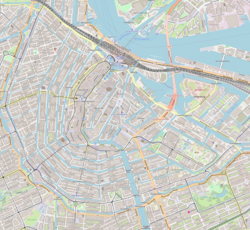Amsterdam Hortus

Hortus Botanicus entrance
|
|
| Established | 1638 |
|---|---|
| Location |
Plantage Middenlaan L2 Amsterdam, Netherlands |
| Coordinates | 52°22′00″N 4°54′28″E / 52.3668°N 4.9079°ECoordinates: 52°22′00″N 4°54′28″E / 52.3668°N 4.9079°E |
| Type | botanic garden |
| Visitors | 229.850 (2014) |
| Director | Taeke Kuipers (until March 1, 2018) |
| Website | https://www.dehortus.nl/ |
Hortus Botanicus is a botanical garden in the Plantage district of Amsterdam, the Netherlands. One of the oldest in the world, it is one of Amsterdam's major tourist attractions.
Hortus Botanicus was founded in 1638 by the city to serve as an herb garden for doctors and apothecaries. It contains more than six thousand tropical and indigenous trees and plants. The monumental Palm House dates from 1912 and is renowned for its collection of cycads.
The hexagonal pavilion dates from the late 1600s. The entrance gate was built in the early 1700s. The Orangery dates from 1875, and the Palm House and Hugo de Vries Laboratory - both created in Amsterdam School expressionist architecture - date from 1912 and 1915.
The garden was almost bankrupt in 1987 when the University of Amsterdam stopped paying its expenses, but a community of individual supporters prevented its closure. Now the Hortus Botanicus is supported by the Amsterdam City Council as well.
There are also two halls at the garden which are now used for conferences and ceremonies, and a cafe serves as meeting point for locals.
Hortus Botanicus is now a popular attraction for both Dutch and international visitors. The collection is famous for some of its trees and plants, some of which are on the "danger" list. Well-known plants and trees can be found there, like the Persian ironwood tree which is known in Dutch as Perzische Parrotia.
Hortus Botanicus's initial collection was amassed during the 17th century through plants and seeds brought back by traders of the East India Company (VOC) for use as medicines and for their possibilities for commerce. A single coffee plant, Coffea arabica, in Hortus's collection served as the parent for the entire coffee culture in Central and South America.
Likewise, two small potted oil palms brought back by the VOC from Mauritius, an island in the Indian Ocean, produced seeds after six years, and these were propagated throughout all of Southeast Asia, becoming a major source of revenue in the Dutch East Indies and now in Indonesia.
...
Wikipedia

